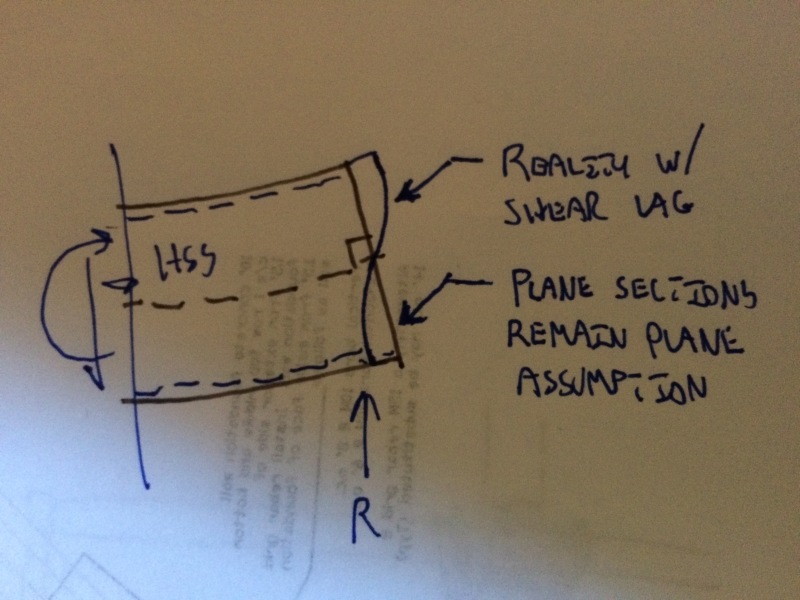rb1975 said:
do you see a different if the inner tube is interference fit ?
In theory no. Again, because the strain diagrams are identical, there's no need to engage friction whether it's available or not.
In reality, I would expect a tight friction fit to change stresses a bit. Intentionally, I've just been discussing flexural behavior assuming that plane section remain plane. In the wild, the strains at the extreme ends of the two tubes would probably differ a bit due to shear lag up the sides of the tubes. That difference would be, at least partially, ironed out by the action of the friction generated at the interface.
rb1957 said:
in the single thick tube, is there no stress on the parting plane ? (I don't think so, but there is in the two tube case)
I would expect there to be some stress at the faux-interface plane in the solid section case. This is conceptually similar to what I mentioned above with respect tot he interference fit. Continuity in the material would tend to enforce strain compatibility more convincingly than shear lag.
rb1957 said:
in the two tubes, a single point load on the outer tube would not load the inner tube as a point load (IMHO) but the inner tube would be loaded (and the outer tube relieved) by a distributed load (as the outer tube bears against the inner one).
No doubt, this phenomenon would have an effect on local bearing stresses etc. As JAE described, however, it wouldn't impact theoretical flexural strains.
SAIL3 said:
this is a slip fit to begin with....if the assumption is that there is no effective means of transferring horiz shear between the 2 tubes, it then poses the question why ,in this application, is it necessary at all....one could apply this reasoning to a laminated wood beam and assume that the bonding between layers as being unnecessary...
That's precisely the point, it's not necessary in certain cases. Regarding the wood example, consider:
CASE 1: tube and tube as described here.
CASE 2: 4X10 main with with a pair of 2x6 sides for reinforcing. The center lines of all member align.
For both cases, I would submit that the following is true:
1) Both members need some mechanism by which vertical load can be transferred from the directly loaded member to the member not directly loaded. Without this, the curvatures of the various members cannot be made to match.
2) For the tubes, the vertical load transfer mechanism is some complex bearing situation, as intimated by rb1957.
3) For the wood, it's vertical shear transfer in the bolts.
So the bolts in the wood are necessary, just not for
horizontal shear transfer. Their role is solely to transfer vertical shear and enforce curvature compatibility among the plies. Fundamentally, this is why we don't have to bother with VQ/It forces when we laminate multi ply wood beams of the same depths. There's just no demand for horizontal shear transfer.
I like to debate structural engineering theory -- a lot. If I challenge you on something, know that I'm doing so because I respect your opinion enough to either change it or adopt it.

